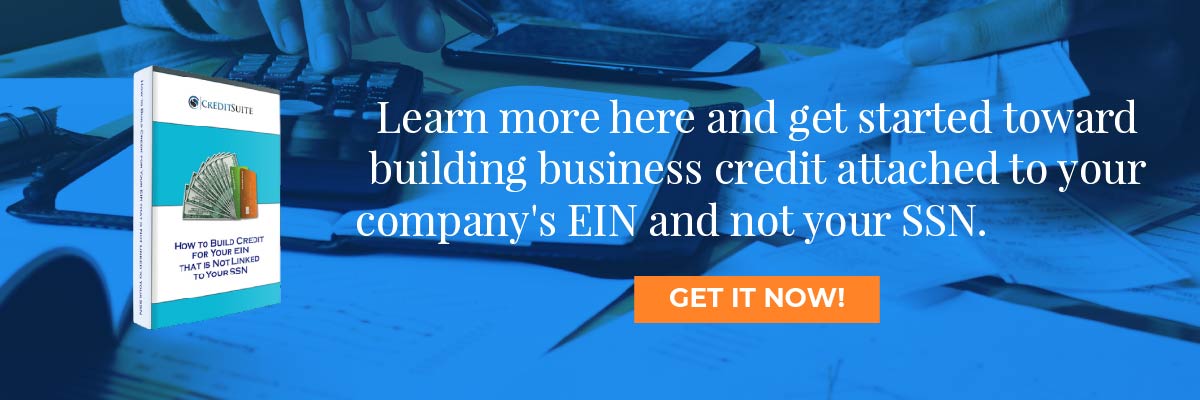- Connect With Us!
- (877) 600-2487
- info@creditsuite.com
5 Tips to Choose the Right Business Entity
Published By Janet Gershen-Siegel at April 24th, 2018
Choose the Right Business Entity Today
Do you know how to choose the right business entity for your company? We show you how to do it – it’s easy!
This is your decision to make. Pay close attention to the tax burden and personal liability as they can affect you, particularly if you have a business with known hazards, such as carpentry or exterminating. You might also want to consider how much control you want to have over your small business.
A sole proprietorship means you call all the shots. But it also means you’re responsible for everything. That can be too much to handle. If it is, then consider one of the other common business entities for a small business.
Choose the Right Business Entity: 5. Taxes
Business entities differ when it comes to how the IRS treats them for tax purposes.
Here are the specifics:
Sole Proprietorships
Sole proprietorships – because the single owner and the sole proprietorship are the same; the owner pays taxes on the sole proprietorship’s profits.
Partnerships
Partnerships – The partnership does not pay income tax. Rather, the business passes its profits or losses to its partners. Then the partners include their respective share of partnership income or loss on their personal tax returns.
Corporations
Corporations – Corporations pay state and federal taxes, and they sometimes also pay local taxes. This includes income taxes on profits. A corporation can be taxed twice: first when a profit is made, and second when dividends go to the shareholders.
S Corporations
S Corporations – an S corporation can often be a smart choice for tax savings purposes. LLC members must pay an employment tax on the whole net income of the business, but only the wages of an S corporation shareholder who is an employee are subject to employment tax. Any other income goes to the owner as a distribution. Distributions are taxed at a lower rate, if at all.
Limited Liability Corporations
LLCs – an LLC does not exist as a separate entity according to the IRS, so it does not pay taxes. Instead, the members are individually taxed.
Learn more here and get started toward building business credit attached to your company’s EIN and not your SSN.
Choose the Right Business Entity: 4. Legal Liability
Legal liability varies when it comes to business entities.
Sole Proprietorships
Sole proprietorship – because the company = its owner, there are no limits on personal liability. If the sole proprietorship did it, then so did its owner. You are responsible for all debts and obligations, and including any risks from actions of employees.
Partnerships
Partnerships – Partnership owners will have full, shared liability. Hence partners are liable for their own actions and for any business debts and decisions made by the other partners. Furthermore, the partnership’s debts can be satisfied via all of the partners’ personal assets.
Corporations
Corporations – In a corporation, the shareholders’ personal assets have protection. Shareholders are usually just held accountable for their investment in company stock.
S Corporations
S Corporations – In an S corporation shareholder’s personal assets, like their personal bank accounts, cannot be used to satisfy any business liabilities, like verdicts against the company.
Limited Liability Corporations
LLCs – LLC members are protected from personal liability for business decisions or actions of the LLC. So if the LLC incurs debt or it is sued, members’’ personal assets are usually exempt. But not always, hence the term ‘‘limited liability’.
Choose the Right Business Entity: 3. How Big is the Company?
It may seem obvious, but an individual owner cannot be a partnership and vice versa. Very large companies tend to be incorporated, due to the first two tips listed above. A corporate structure can save individuals from both tax and legal liabilities – most of the time.
Choose the Right Business Entity: 2. How Will the Profits be Split?
Of course, if there’s only one person, then there’s only one split – e. g. no split at all. But what about when it comes to partnerships? They do not have to be split evenly. However, that is the assumption so, unless the specifics are spelled out in the partnership agreement, it is assumed the split is an even one.
Corporations
As for corporations, the split is dictated by the percentage of shares owned by the stockholders, and the total number of stocks. A corporation with 100 shares and 100 shareholders isn’t much different from a regular partnership when it comes down to profit distribution. But corporations tend not to be run that way.
Instead, in a corporation, the biggest shareholders either have a seat on the Board of Directors or they control a seat where they have installed someone on the board who will fulfill their wishes. Hence in a corporation with 100 shares of stock, the board might consist of three people who each have 20 shares, with the remaining 40 shares being distributed evenly amongst other shareholders who have smaller percentages of the whole.
Learn more here and get started toward building business credit attached to your company’s EIN and not your SSN.
Choose the Right Business Entity: 1. Control
Finally, how do you want the business to be controlled? Will it be one person calling the shots? Will partners informally divide the work amongst themselves? Or will a Board of Directors take a more formal approach, with annual meetings which the other shareholders are invited to?
Choose the Right Business Entity: Building Business Credit
While you can choose the right business entity, consider establishing business credit. You could potentially build company credit with any business entity. But corporations and limited liability corporations are generally best.
Small business credit is credit in a business’s name. It doesn’t link to an owner’s personal credit, not even when the owner is a sole proprietor and the only employee of the company.
Thus, a business owner’s business and consumer credit scores can be very different.
The Advantages
Since small business credit is independent from personal, it helps to safeguard a business owner’s personal assets, in the event of court action or business insolvency.
Also, with two separate credit scores, an entrepreneur can get two different cards from the same merchant. This effectively doubles purchasing power.
Another advantage is that even start-ups can do this. Going to a bank for a business loan can be a recipe for disappointment. But building business credit, when done properly, is a plan for success.
Consumer credit scores depend on payments but also various other components like credit utilization percentages.
But for small business credit, the scores truly only depend on if a company pays its bills timely.
The Process
Growing small business credit is a process, and it does not happen without effort. A business has to actively work to build business credit.
Having said that, it can be done easily and quickly, and it is much speedier than establishing individual credit scores.
Merchants are a big component of this process.
Accomplishing the steps out of sequence will result in repetitive denials. No one can start at the top with small business credit. For instance, you can’t start with retail or cash credit from your bank. If you do, you’ll get a denial 100% of the time.
Company Fundability
A small business has to be fundable to lending institutions and vendors.
For that reason, a business will need a professional-looking website and e-mail address. And it needs to have website hosting from a company such as GoDaddy.
Additionally, company phone and fax numbers need to have a listing on ListYourself.net.
Also, the company phone number should be toll-free (800 exchange or the equivalent).
A company will also need a bank account dedicated purely to it, and it has to have every one of the licenses essential for operation.
Licenses
These licenses all must be in the identical, correct name of the small business. And they need to have the same company address and phone numbers.
So note, that this means not just state licenses, but possibly also city licenses.
Dealing with the IRS
Visit the IRS website and obtain an EIN for the small business. They’re totally free. Choose a business entity such as corporation, LLC, etc.
A business can start off as a sole proprietor. But they will most likely want to change to a form of corporation or an LLC.
This is in order to diminish risk. And it will maximize tax benefits.
A business entity will matter when it comes to tax obligations and liability in the event of litigation. A sole proprietorship means the entrepreneur is it when it comes to liability and taxes. No one else is responsible.
Sole Proprietors Take Note
If you operate a company as a sole proprietor, then at the very least be sure to file for a DBA. This is ‘doing business as’ status.
If you do not, then your personal name is the same as the business name. Consequently, you can wind up being directly accountable for all company debts.
And also, according to the Internal Revenue Service, by having this structure there is a 1 in 7 chance of an IRS audit. There is a 1 in 50 chance for corporations! Prevent confusion and significantly reduce the odds of an Internal Revenue Service audit simultaneously.
Instigating the Business Credit Reporting Process
Start at the D&B website and get a cost-free D-U-N-S number. A D-U-N-S number is how D&B gets a company into their system, to generate a PAYDEX score. If there is no D-U-N-S number, then there is no record and no PAYDEX score.
Once in D&B’s system, search Equifax and Experian’s websites for the small business. You can do this at fastcs.wpengine.com/reports. If there is a record with them, check it for correctness and completeness. If there are no records with them, go to the next step in the process.
This way, Experian and Equifax will have something to report on.
Vendor Credit Tier
First you should establish trade lines that report. This is also known as the vendor credit tier. Then you’ll have an established credit profile, and you’ll get a business credit score.
And with an established business credit profile and score you can begin to get credit in the retail and cash credit tiers.
These kinds of accounts often tend to be for the things bought all the time, like marketing materials, shipping boxes, outdoor work wear, ink and toner, and office furniture.
But first of all, what is trade credit? These trade lines are credit issuers who will give you starter credit when you have none now. Terms are typically Net 30, instead of revolving.
So, if you get approval for $1,000 in vendor credit and use all of it, you must pay that money back in a set term, like within 30 days on a Net 30 account.
Details
Net 30 accounts need to be paid in full within 30 days. 60 accounts need to be paid in full within 60 days. Unlike with revolving accounts, you have a set time when you have to pay back what you borrowed or the credit you made use of.
To begin your business credit profile properly, you ought to get approval for vendor accounts that report to the business credit reporting bureaus. When that’s done, you can then make use of the credit.
Then repay what you used, and the account is on report to Dun & Bradstreet, Experian, or Equifax.
Vendor Credit Tier – It Helps
Not every vendor can help like true starter credit can. These are merchants that will grant an approval with marginal effort. You also want them to be reporting to one or more of the big three CRAs: Dun & Bradstreet, Equifax, and Experian.
You want 5 to 8 of these to move onto the next step, which is the retail credit tier. But you may need to apply more than one time to these vendors. So, this is to demonstrate you are trustworthy and will pay promptly.
Retail Credit Tier
Once there are 5 to 8 or more vendor trade accounts reporting to at least one of the CRAs, then move to the retail credit tier. These are businesses like Office Depot and Staples.
Just use your Social Security Number and date of birth on these applications for verification purposes. For credit checks and guarantees, use the company’s EIN on these credit applications.
One instance is Lowe’s. They report to D&B, Equifax and Business Experian. They want to see a D-U-N-S and a PAYDEX score of 78 or more.
Fleet Credit Tier
Are there 8 to 10 accounts reporting? Then move to the fleet credit tier. These are businesses like BP and Conoco. Use this credit to buy fuel, and to fix, and take care of vehicles. Only use your Social Security Number and date of birth on these applications for verification purposes. For credit checks and guarantees, make sure to apply using the company’s EIN.
One such example is Shell. They report to D&B and Business Experian. They want to see a PAYDEX Score of 78 or higher and a 411 company telephone listing.
Shell might say they want a particular amount of time in business or revenue. But if you already have sufficient vendor accounts, that won’t be necessary. And you can still get an approval.
Cash Credit Tier
Have you been sensibly handling the credit you’ve gotten up to this point? Then move onto the cash credit tier. These are service providers like Visa and MasterCard. Only use your SSN and date of birth on these applications for verification purposes. For credit checks and guarantees, use your EIN instead.
One such example is the Fuelman MasterCard. They report to D&B and Equifax Business. They need to see a PAYDEX Score of 78 or more. And they also want you to have 10 trade lines reporting on your D&B report.
Plus, they want to see a $10,000 high credit limit reporting on your D&B report (other account reporting).
Also, they want you to have an established small business.
These are companies such as Walmart and Dell, and also Home Depot, BP, and Racetrac. These are typically MasterCard credit cards. If you have 14 trade accounts reporting, then these are doable.
Learn more here and get started toward building business credit attached to your company’s EIN and not your SSN.
Monitor Your Business Credit
Know what is happening with your credit. Make certain it is being reported and take care of any inaccuracies ASAP. Get in the habit of taking a look at credit reports and digging into the details, and not just the scores.
We can help you monitor business credit at Experian and D&B for only $24/month. See: fastcs.wpengine.com/monitoring.
Update Your Records
Update the info if there are inaccuracies or the data is incomplete.
Fix Your Business Credit
So, what’s all this monitoring for? It’s to contest any problems in your records. Errors in your credit report(s) can be corrected. But the CRAs generally want you to dispute in a particular way.
Disputes
Disputing credit report errors usually means you send a paper letter with copies of any evidence of payment with it. These are documents like receipts and cancelled checks. Never mail the original copies. Always send copies and keep the original copies.
Fixing credit report inaccuracies also means you specifically itemize any charges you challenge. Make your dispute letter as understandable as possible. Be specific about the issues with your report. Use certified mail so that you will have proof that you mailed in your dispute.
Choose the Right Business Entity: A Word about Business Credit Building
Always use credit sensibly! Never borrow more than what you can pay off. Track balances and deadlines for repayments. Paying off on time and fully will do more to elevate business credit scores than nearly anything else.
Building business credit pays. Great business credit scores help a small business get loans. Your loan provider knows the company can pay its financial obligations. They recognize the company is authentic.
The company’s EIN links to high scores and lending institutions won’t feel the need to demand a personal guarantee.
Business credit is an asset which can help your business for years to come.
Choose the Right Business Entity: Takeaways
Business entities can be changed. None of these decisions is set in concrete, particularly as companies grow and shrink all the time.
The Internal Revenue Service is well aware that circumstances can force all sorts of changes. This can be anything from the death of a partner to a lawsuit against a member of a corporation’s Board of Directors.
If you need to change your business entity, you’d hardly be the first business owner to do so. It’s never too late to switch to the correct business entity. Share this and tell your friends what you think of how to live your best financial life.

 " class="attachment-blog-single size-blog-single wp-post-image" alt="Get Business Credit Cards for New Businesses Credit Suite-Business Line of Credit Decoded" title="Get Business Credit Cards for New Businesses">>
" class="attachment-blog-single size-blog-single wp-post-image" alt="Get Business Credit Cards for New Businesses Credit Suite-Business Line of Credit Decoded" title="Get Business Credit Cards for New Businesses">>
